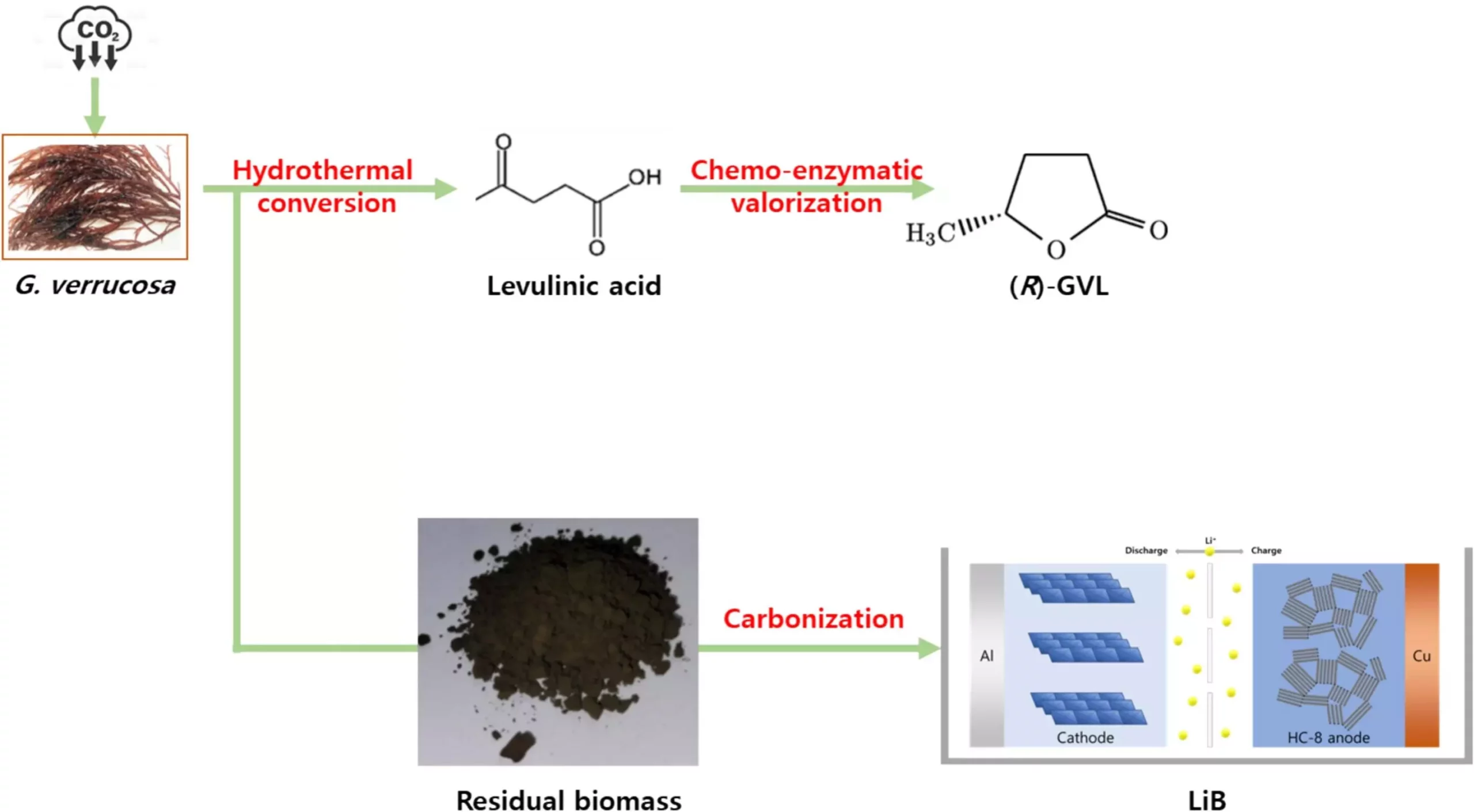Recent advancements in biochemistry have unlocked a promising avenue for sustainable fuel production through the utilization of marine biomass, particularly common seaweeds like Kkosiraegi. Researchers led by Dr. Kyoungseon Min at the Gwangju Clean Energy Research Center, in collaboration with Kangwon National University, have developed a groundbreaking method to convert these seaweeds into valuable precursors for bio-aviation fuels and components for energy storage devices. This innovative process, aiming to replace fossil fuels with eco-friendly alternatives, highlights the potential of seaweed in the battle against climate change.
The newfound method centers around the production of (R)-gamma-valerolactone (GVL), a precursor that can significantly decrease the carbon footprint of aviation fuels. With seaweed as a feedstock, the research introduces a streamlined approach that bypasses some of the complexities associated with traditional sugar-to-jet technology, which can be costly and inefficient. This pioneering work underscores an evolving narrative in the renewable energy sector, where the search for sustainable materials often leads to the ocean’s vast resources.
Emerging studies suggest that bio-aviation fuels derived from seaweed could reduce greenhouse gas emissions by as much as 82% compared to conventional fossil fuels. As the aviation industry grapples with its substantial carbon footprint, innovations in this space are not merely welcome; they are essential. Projections indicate that by 2070, sustainable bio-aviation fuels could constitute 35% of the global aviation fuel market, signifying a critical shift toward more responsible fuel sourcing.
Unlike traditional processes, which require complicated pre-treatment and high-pressure hydrogen reactions, the technology developed by Min’s team employs a more efficient, one-step enzymatic reaction. This method converts biomass directly into levulinic acid, which can then be processed to yield the valuable (R)-GVL. The simplified process achieves higher yields—reportedly ten times more precursor from the same biomass input—addressing the perennial challenge of efficiency in biofuel production.
One of the more remarkable aspects of this new methodology is its focus on enantioselective production. Current production methods often yield a mixture of optical isomers, (R)- and (S)-forms of GVL, which limits its utility in applications such as biopharmaceuticals and bioplastics. The engineered enzyme employed in this innovative process is capable of converting levulinic acid into optically pure (R)-GVL with an impressive accuracy of over 99.999%. This precision opens doors to novel applications, particularly in the pharmaceutical industry, where certain medications require specific optical isomers to be effective.
This breakthrough could lead to the development of hypertension treatments that leverage (R)-GVL. The ability to selectively produce this compound not only enhances its economic viability but also bolsters the pharmaceutical sector’s pursuit of more sustainable practices. The implications of this research extend beyond energy production, suggesting a promising intersection of green technology and healthcare.
A vital component of this research is the potential reuse of residual biomass after the conversion of seaweed into levulinic acid. The residual Kkosiraegi biomass can be transformed into anodes for lithium-ion batteries, utilizing a carbonization process to create “hard carbon” materials. This innovative approach not only underscores the versatility of seaweed as a resource but also emphasizes the circular economy, allowing researchers to maximize outputs and minimize waste.
By applying the carbonized residue in battery applications, researchers have demonstrated significant improvements in lithium-ion battery performance, including enhanced capacity and longevity. This multifaceted use of biomass positions seaweed as a formidable player in the renewable energy landscape, capable of contributing to both sustainable fuel and energy storage solutions.
Dr. Min’s research exemplifies advancements in the sustainable energy sector that exploit natural resources, particularly the vast potential of marine biomass. With Korea’s geographic advantage in accessing seaweed, the strategic development of this technology could bolster national energy security and environmental stewardship. As the world pushes toward a greener future, innovations like these serve as essential stepping stones, paving the way for comprehensive strategies that address both climate change and energy demands.
The transition from traditional petroleum-based products to renewable alternatives hinges on developing cutting-edge technologies that embrace sustainability while fostering diverse applications across industries. This research not only cultivates the foundation for eco-friendly fuel sources but also emphasizes the integrated use of waste materials to create extraordinary new value, marking a pivotal moment in environmental innovation.


Leave a Reply